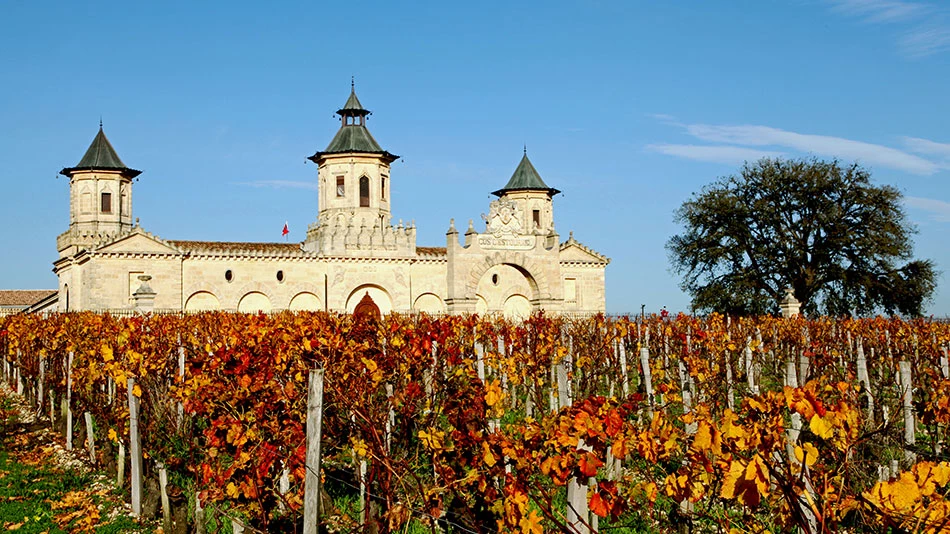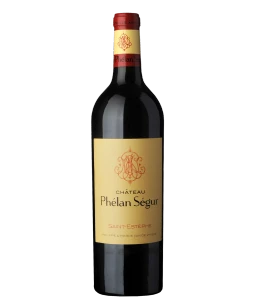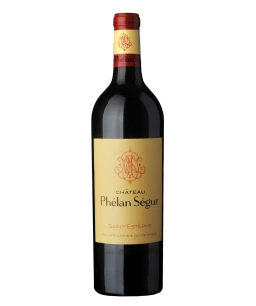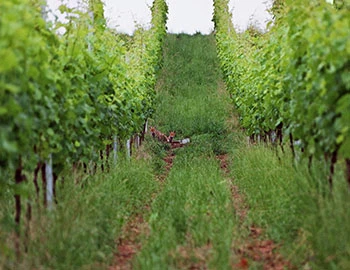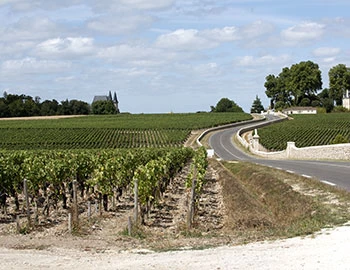St-Estèphe
Saint-Estèphe: classic, full of vim and vigor
Thanks to their prominent acidity and robust tannins, the wines of Saint-Estèphe are considered absolute classics of the Médoc. The distinct profile of these wines is owed to the particular terroir. Saint-Estèphe borders Pauillac, and is the northernmost of the four famous communal appellations of the Médoc. At the appellation’s best-known châteaux, Cabernet Sauvignon is the leading variety, but there are also producers here whose assemblages incorporate Merlot for the starring role.
Red wines from St-Estèphe
While terroir-defining gravel banks shape the landscape in the south of the Médoc, they gradually disappear in Saint-Estèphe. The gravel deposited by the Gironde here is more fine-grained, with substantially more clay, loam or sand mixed in than in neighbouring Pauillac or Saint-Julien. Of the total of five alluvial terraces distinguished in the Médoc, only three of those in Saint-Estèphe play a role in the appellation’s terroir. Of particular significance is the rise designated “Terrace 3”, which reaches a height of almost 30 meters and on the surface contains an abundance of gravel, sometimes from quartz and quartzite, mixed with sand, clay and loam. “Terrace 4”, located closer to the Gironde, is considered the truly top terroir, reaching an elevation of only 15 metres. The soil here is marked by yellow clay and chalk. In the southwestern part of the growing area, a few kilometres from the river, the terroir is characterized more by a marl-clay mixture.
Because the gravel banks are less pronounced and the soils heavier, the water flows less quickly than in Pauillac or Saint-Julien. This is advantageous in hot years like 2003 or 2015, as the water supply is ensured even during dry periods and the vines are exposed to less heat stress. In poor (i.e., rainy) years, the water’s even more difficult drain-off can negatively affect the quality and health of the grapes.
Five classified châteaux
At sites in the appellation’s southeast (around Terraces 3 and 4), near the border with Pauillac, where gravel dominates, assemblages from the châteaux are defined by Cabernet Sauvignon. In the centre and west of the appellation, where the vines are rooted in a constantly changing mixture of calcareous loam, clay and sand, Merlot also plays an important role. Although wines from Saint-Estèphe have become fuller as a result of a warming climate, they still embody traditional Bordeaux virtues, with prominent acidity and robust tannins. Currently, around 50 châteaux cultivate a vineyard area of roughly 1,250 hectares here. Five estates belong to the exclusive circle of classified crus, two of them as deuxième crus (second growths).
